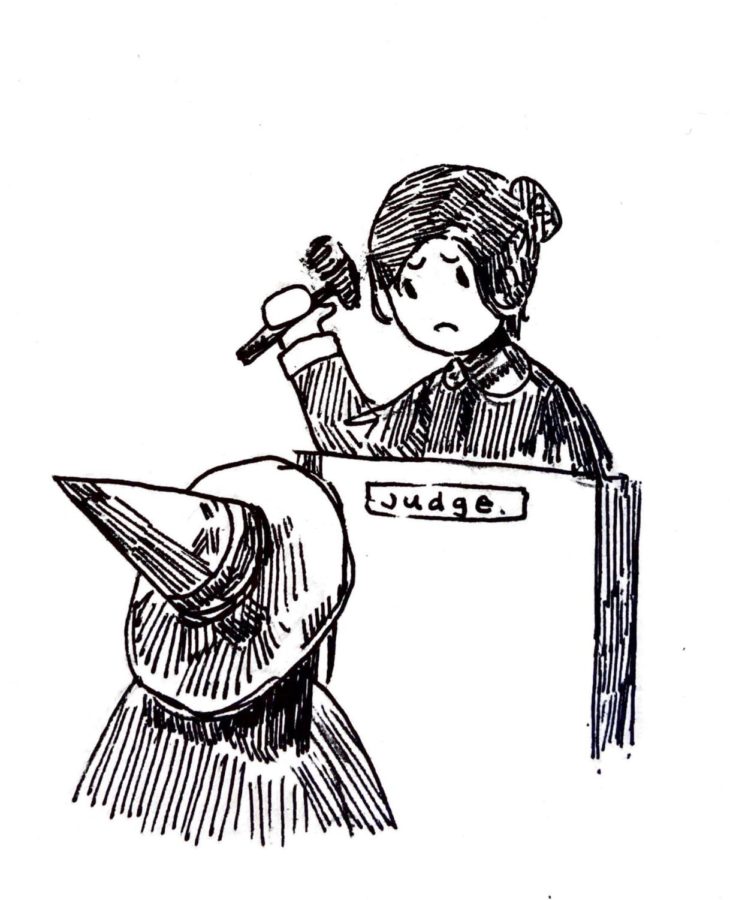Salem Witch Trials cannot be forgotten
The victims of the Salem Witch Trials must be remembered.
April 19, 2023
Federal prosecutors overseeing the investigations of former President Donald Trump’s handling of classified documents recently demanded testimony from some of his lawyers. Unsurprisingly, Trump vehemently objected, arguing prosecutors were violating his “right to consult with counsel” and therefore “jeopardize[d] American rights and values.” Paradoxically, Trump also argues denying this “American right” to citizens accused of particular crimes is completely justified. He went as far as declaring, “more due process was afforded to those accused in the Salem Witch Trials” than he was given during his multiple impeachments.
Coincidentally, this month marks the 331st anniversary of the Salem Witch Trials. An analysis of the trials, however, demonstrates that Trump is drawing a false equivalence. To truly understand, one must take a trip down memory lane to where it all began: Salem Village, 1692. Rampant fear from attacks by Native Americans, hunger, and disease created a perfect witch’s brew. One day, when some children began behaving strangely and doctors could not diagnose their illness, paranoid colonists concluded that the children had been bewitched.
A special court, called the Court of Oyer and Terminer, was established to try the suspected individuals. During this period, defendants had no intrinsic right to be represented by a lawyer. Instead, biased judges, convinced of the accused’s guilt, conducted the trials. Their goal was to prove – not determine – guilt. “No matter what proof [the victims] had, [it] was just ‘oh you’re making [this] up or you’re using your witch powers to lie,’” Sophomore Suchi Tyagi added. After being denied the right to counsel, 19 accused “witches” in the judge-led circus were put to death.
By May 1693, hundreds had been accused, and several others died in custody – one man was even crushed to death with heavy stones. But what came of these heinous acts? In an interview, attorney Michael Levin stated, “very soon after the trials ended … [the Court of Oyer and Terminer] got dissolved and a new court was in its place. That new court addressed many of the injustices, criminal procedure and evidentiary deficiencies of the Salem witch trials.” In fact, Levin added, “about 70 years later during the trials for the Boston Massacre, [it]…looked nothing like the Salem Witch Trial Court…it was very dramatically shifting towards innocent until proven guilty.” In addition, Senior Michelle Yuenn said, “the 6th amendment was also passed, which federally established the right to counsel. This was completely non-existent during the witch trials.”
The legacy of Salem lives on in the present day constitutionally-protected right to be represented by counsel, regardless of the accused’s crimes or socioeconomic status. Contrary to Trump’s assertion that the right to counsel should be applied selectively, and that he was treated worse than the victims of Salem, he has been fully represented – a luxury the victims of the Salem Witch Trials never had. Trump has used the infamous phrase “witch hunt” more than 300 times in order to demonize legitimate investigations and impeachment trials against him. However, when we analyze the facts and the history, it’s clear that the right to counsel is fundamental and should be given equally and unconditionally.



